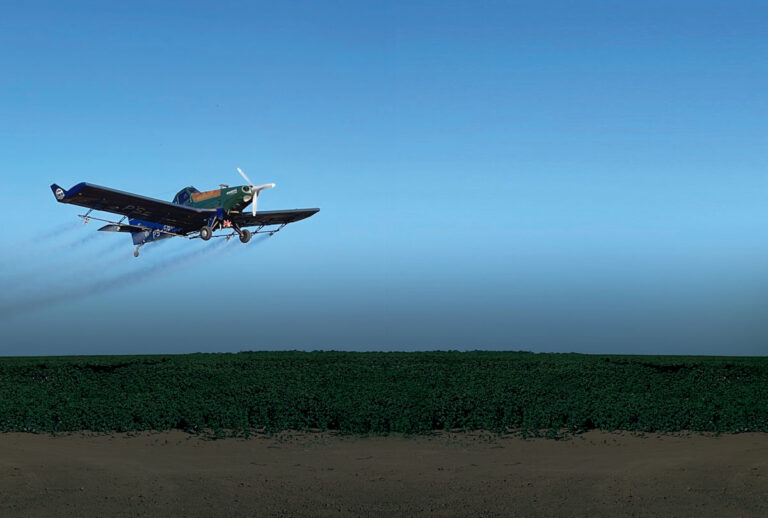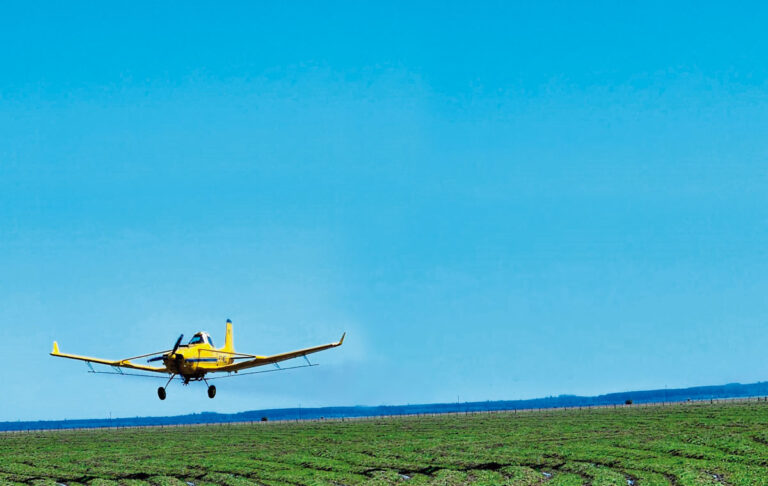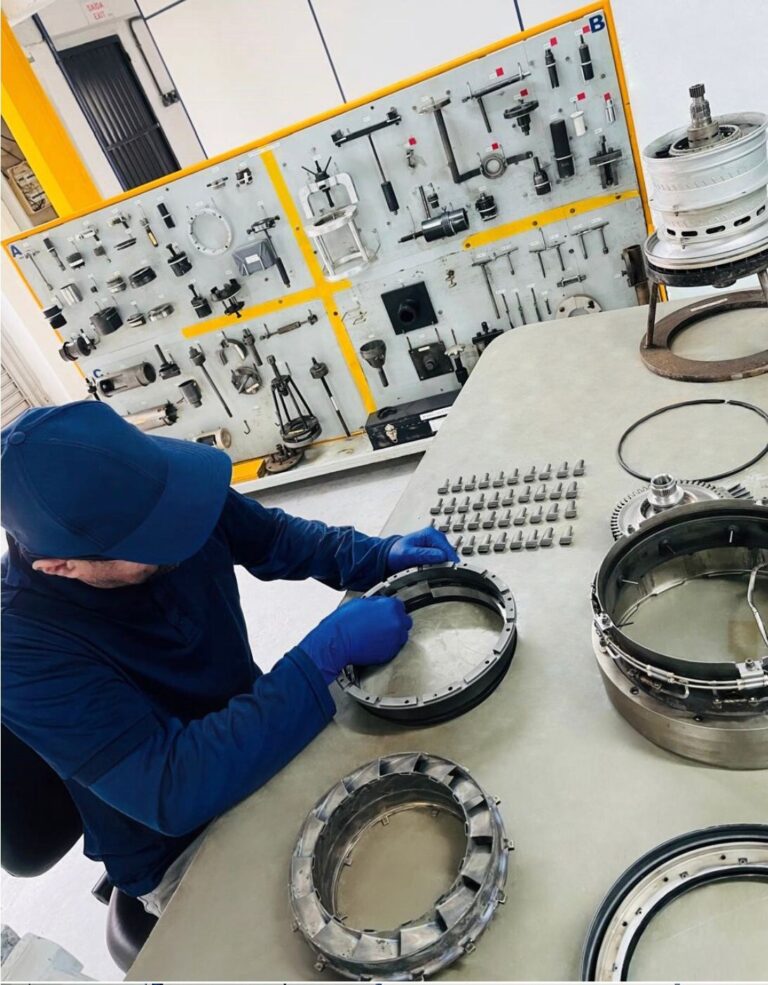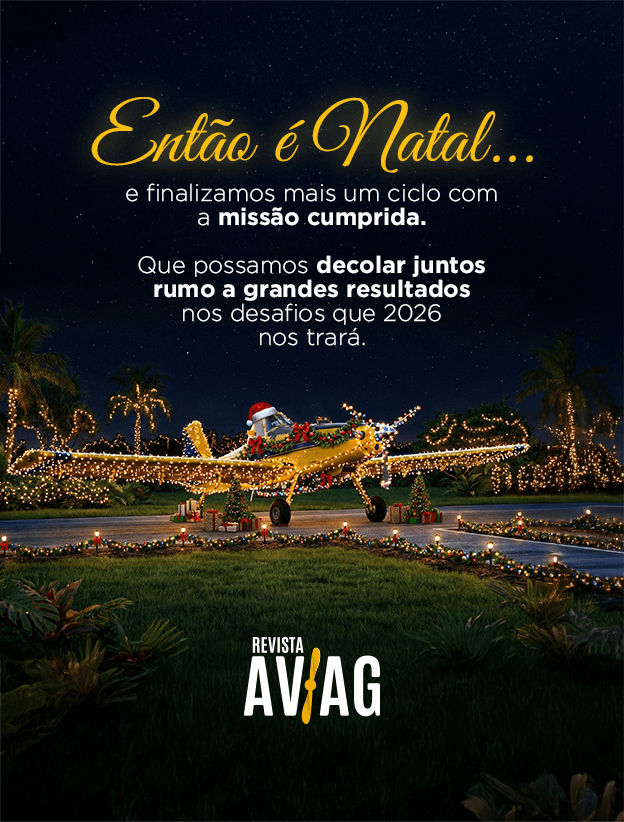“No more prejudice against agricultural aviation.” That is the theme of a campaign launched in September by the Brazilian Institute of Agricultural Aviation (Ibravag) and by the National Union of Agricultural Aviation Companies (Sindag) to counteract the main myths from the sector.
This will be a long-lasting action, based mainly by the social media from the two organizations and partners, focusing on bringing to people the facts that prove the importance, transparency and safety of the aerial tools (aircrafts, helicopters and drones) in the field.
The initiative has a series of animated videos that airs weekly, with the characters Cris and Ada. “The mission of our virtual duo is to be provocative and make the public think. At the same time, they show how agricultural aviation is present in people’s lives. Whether it is in the sustainable production of food, fibers and biofuels or even in the firefighting in nature reserves”, explains the CEO of Ibravag and Sindag, Gabriel Colle.
Colle emphasizes that Cris and Ada are just a part of the campaign that still has the posts in cards, as well as videos of institutions from aero agricultural business and directors from the entities explaining (and blow up) the biggest stereotypes around the activity. “We have publications almost everyday in our social media”, completes. It is important to remember that, besides Instagram and Facebook’s posts, who’s interested in more content can check the website with more information from the campaign listed in searches, news and statistics that testify the truth about Brazilian agricultural aviation.
RATIONALITY
As Colle says, the goal of the campaign is to bring rationality to the debate about the security and environmental sustainability of the work on the field. “The lack of knowledge from the general population about the routine and the tools used in agriculture, specially in the mass scale production, was always a ‘fertile soil’ to stereotypes”, notes. In aero agriculture, that is even more attenuated, for its being a field extremely specialized and with which only a few people have familiarity.
The director reminds that a direct consequence of that was the facility with which stereotypes have been established around the sector. “It is just that, from some time until now, those myths started to permeate political speeches, from statistics with exaggerated figures to prohibition projects, launching justifications that didn’t even have a coherent cause and consequence link.” As he says, “situations that, in thesis, would not survive a minimal of rationality, gained space in legislative plenaries and echoed until a few Justice Courts”.
To access the material of the campaign clink in the link: https://ibravag.org.br/
Actions with the “Pensar Agro Institute”

Just before the “No More Prejudice” campaign, the efforts from Ibravag and Sindag to take rationality to debates about the aero agricultural sector, there was an action together with the Pensar Agro Institute – IPA (Thinking Agri, in a literal translation), in Brasília. It was in a weekly meeting, August 8th, when the CEO Gabriel Colle gave out a folder summing up a few of the main stereotypes refuted by the sector. The collection of arguments also includes topics that were part of the motions for clarification presented by Sindag in the case before the Federal Supreme Court (STF) on the judgment that ruled that the Ceará (a state in Brazil) law banning air tools in that state was constitutional.
“Actually, it was a summary of the main myths, but with a QR Code (to the side) where the reader could access the whole content of our reports. A line that we will follow in the next materials against stereotypes, including links to the primary sources to support the information”, as Colle had already said. According to the CEO, the folder delivered to IPA was to gain support from the entities that are part of the institution – that for its turn advises the Parliamentary Agricultural Front (FPA) in the National Congress and liaises between the productive sector and the Federal Executive and the Judiciary itself.
Sindag had been officialized in July as the 51st entity to compose the Pensar Agro. At the time, the president of the Syndicate, Hoana Almeida Santos, coordinated the agenda from the 11th in the IPA meeting- showing a general vision of the sector, its challenges and the main demands from the AgAv sector. On the occasion, the president guaranteed that the work would have new products in the following months, focusing on giving the public credible information that would stimulate people to think about it. “Therefore, the idea is to establish dialogs that will prevent radicalisms and promote continuous improvement”, she summed up.
To access the content of the folder we gave to the entities and politics in Brasília, click on the link: https://sindag.org.br/2023/08/03/proibicao-da-aviacao-agricola-no-ce-stf-fatos-e-mitos/
Hearing in the Chamber of Deputies reinforced the sector’s importance

The efforts of aero-agricultural organizations to combat myths and provide clear information about the sector reached an important moment on August 30, at the Chamber of Deputies in Brasilia. It was with the public hearing on the Challenges and Opportunities of the Sector, of the House Committee on Agriculture, Livestock, Supply and Rural Development (CAPDR), requested by deputies Tião Medeiros (PP/PR, who chaired the session) and Marussa Boldrin (MDB/ GO). The meeting served to showcase not only the safety and professionalism of Brazilian agricultural aviation, but also its importance for large soybean, corn and cotton crops in the country’s main producing regions. In addition to its essential presence for the rice produced in Rio Grande do Sul and Tocantins (which supplies practically the entire country) and even the survival of small sugar cane producers in Pernambuco.
The opening speech was from Sindag’s president, Hoana Santos, who was accompanied by a group of AgAv entrepreneurs and more representatives from Sindag and Ibravag. The main question in debate was a scenario where aviation (as in aircrafts, helicopters and drones) suffers with the myths created as the lack of knowledge from society about its technology and legislation. At the same time, actually, it is the only tool to crop treatment with its own regulations in the country. In addition to being the most transparent in its operations, it also requires the most technical training for its staff and has internationally recognized technology.
These aspects were widely discussed during the more than two-hour session, which also included speeches by technical consultant and former professor at the Federal University of Lavras (Ufla, in Minas Gerais) Wellington Pereira Alencar de Carvalho; researchers from Embrapa Sorghum and Maize Décio Karam and from the Brazilian Association of Cotton Producers (Abrapa) Guilherme Rolim; the International Business coordinator of Zanoni Equipamentos, Lucas Zanoni; the executive director of the Brazilian Association of Soybean Producers (Aprosoja Brasil), Fabrício Morais Rosa, and the managing director of the Federation of Sugarcane Planters of Brazil (Feplana), Guilherme Lui de Paula Bueno.
” Sustainability has to walk together with development. And this is a very important agenda for us as well”, highlighted Hoana. “We know that our country’s development is not going to be solved by laws of prohibition, but with the support for new research and new technologies”, said Hoana again. She also presented Tião Medeiros a plaque from Sindag in recognition of his effort to give even more technical criteria to the debate.
To access the whole public audience about the sector in the Deputy’s Chamber, click in the link: https://www.youtube.com/watch?v=nFXsFLhINTE
Researcher says his work could “never” be used against the sector

One of the names most often cited as the author of studies used against the sector, Brazilian Agricultural Research Corporation (Embrapa) researcher Aldemir Chaim was adamant that his work could never be used as a basis for this type of citation. Simply because his objectives and methods were not to evaluate the effectiveness of the tool. This was in an interview he gave in August to the Sindag website (check it out in full via the QR code on this page), in his office at Embrapa in Jaguariúna, in the interior of São Paulo.
In practice, the studies from Chaim, made as of 1999, were useful only to create markings on water-sensitive cards to compare the drop count using the old analog method (“with the eye”, with the help of a microscope) and a digital system (scanning the cards and counting by computer). “It only serves to guide calibration. It’s not a residue analysis that you can use in depth,” he said in the interview. “Embrapa’s scientific part (in the case of the aerial spraying research for drops) is in providing a calibration tool for farmers to use to improve their spraying,” he added, about the work that generated the Drops Program (Programa Gotas, in the original name).
Chaim’s work is normally associated with the myth that aerial applications lose 70% of their product due to the drift- this depends on who is making the claim, as these rates can vary from 50% to as much as 90%. Ironically, the most cited myth is also the blatantly lack of rationality.
To finish, in 2019 Embrapa itself shared a Technical Note emphasizing the security of agricultural aviation in the fields. The document also reinstates the need for a free-of-prejudice debate to establish in Brazil a food and energy security policy. The document was a result of the project “Development of the aerial application of agrochemicals as a strategy of control of agricultural pests with national interest” – Redagro.
The biggest research done in Brazil about aero agricultural technologies, between 2013 and 2017, involved six research centers from Embrapa, ten universities and two tech companies.
To access the complete interview in Sindag’s website, click in the link: https://sindag.org.br/noticias_sindag/chaim-pesquisas-da-embrapa-focaram-em-calibracao-de-deposicao/








